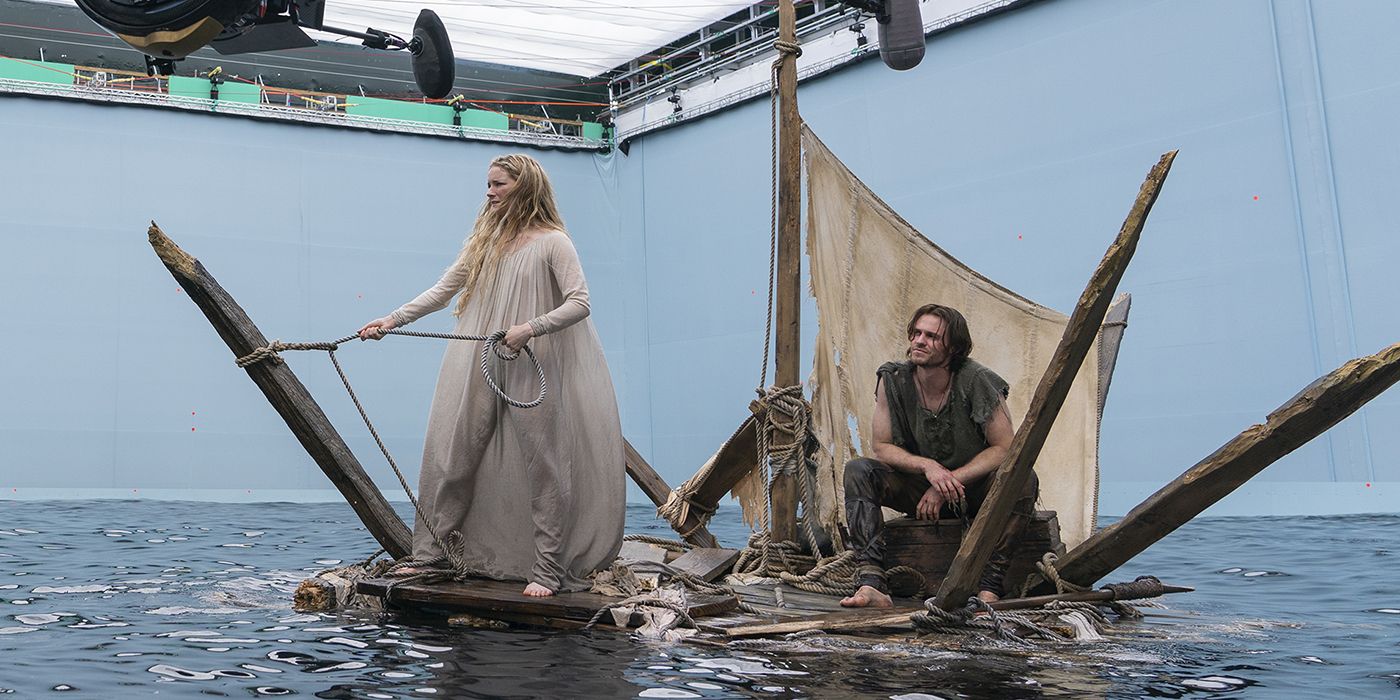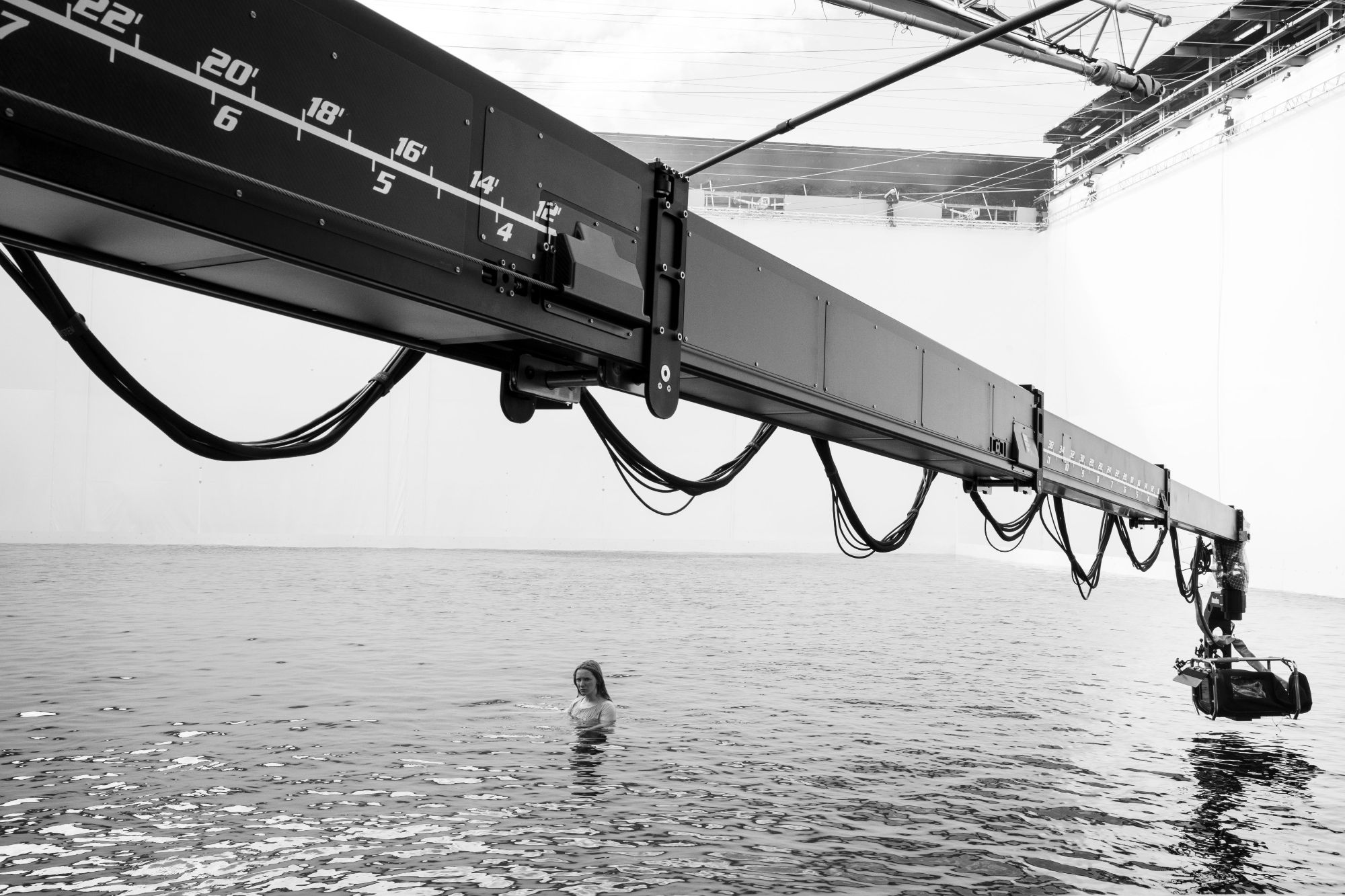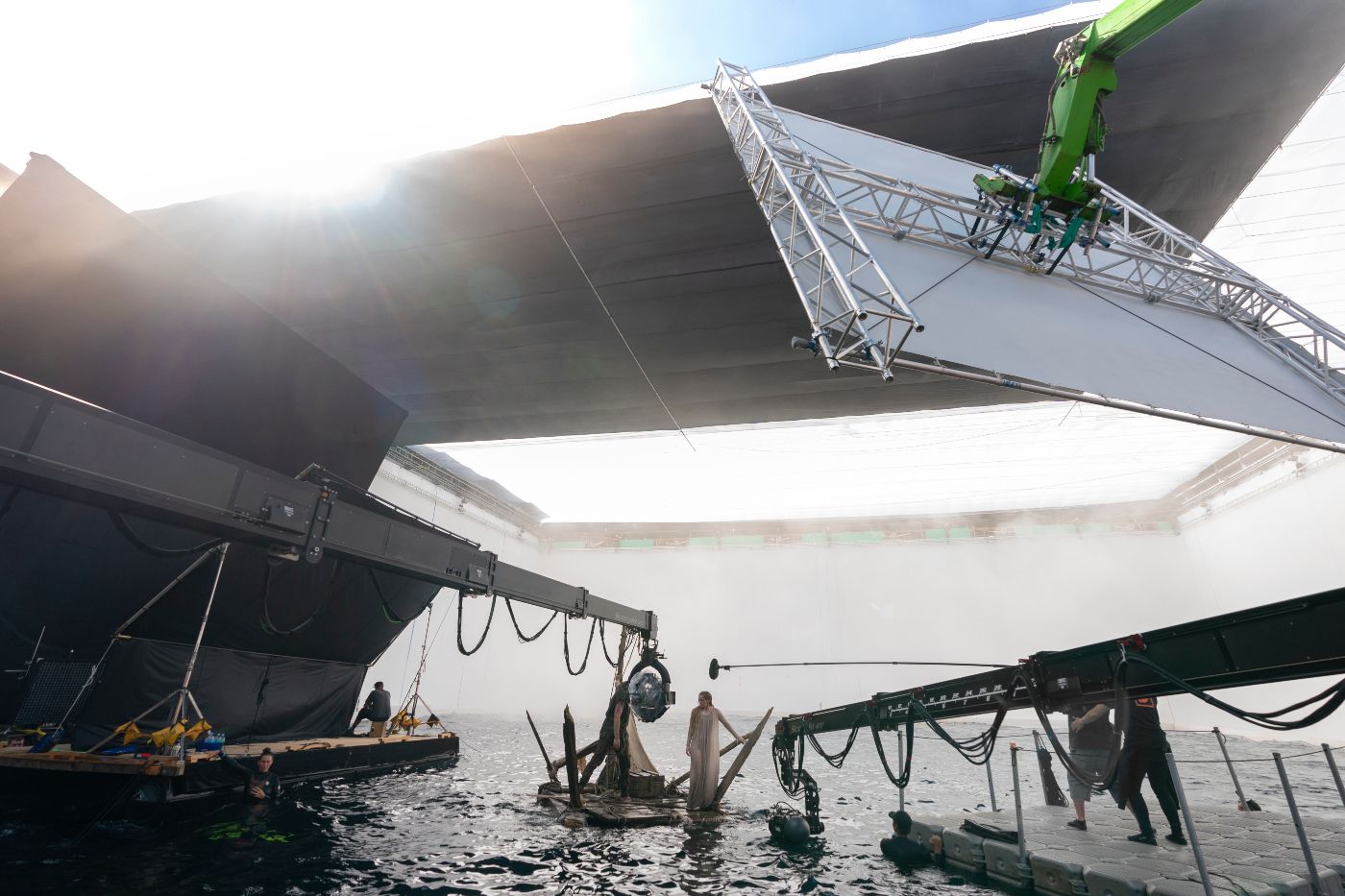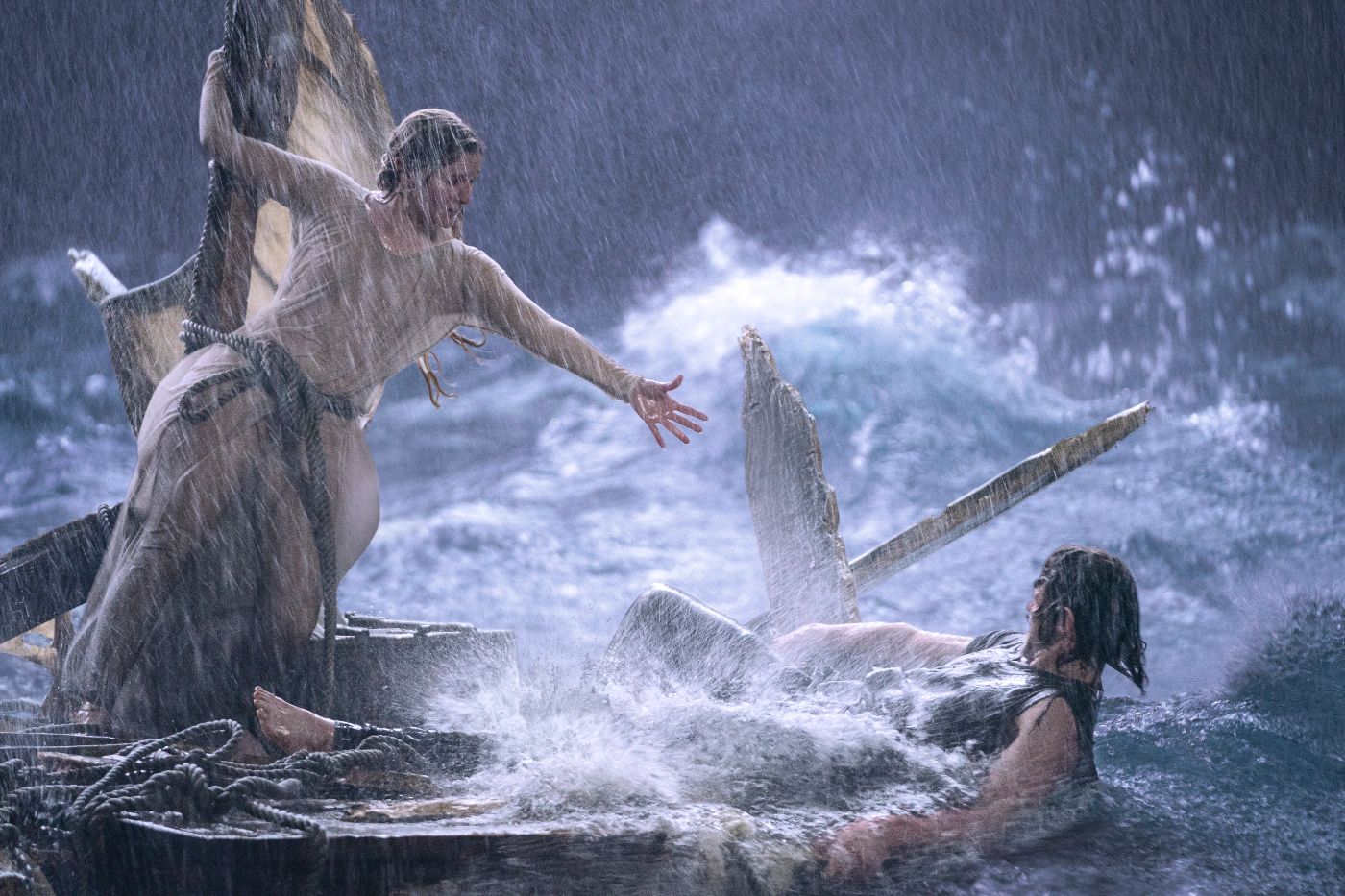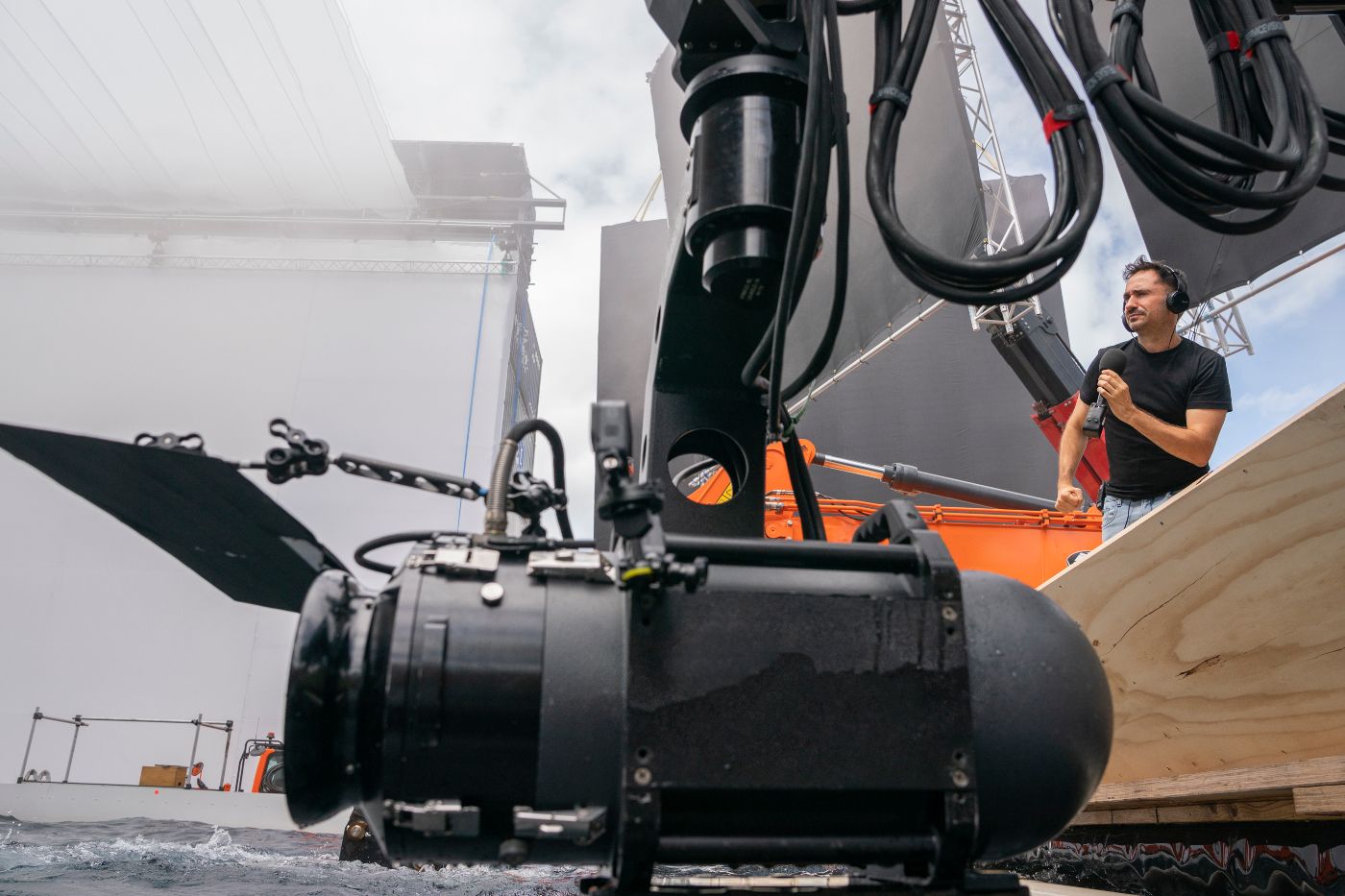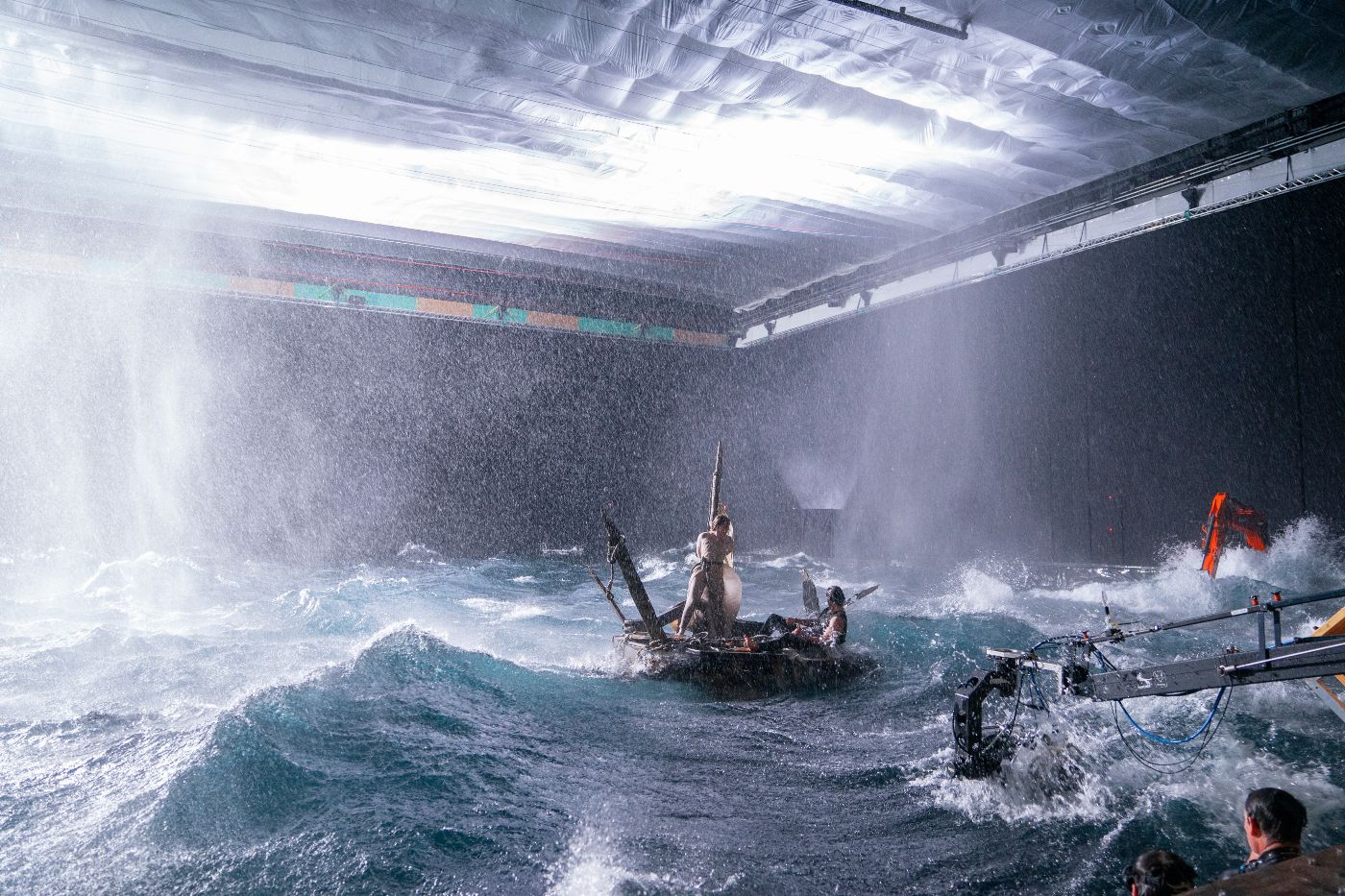If there’s any word that could be used to accurately describe the world of The Lord of the Rings, it’s vast. The fictional setting first envisioned by J.R.R. Tolkien, which began all the way back in 1937 with the publication of The Hobbit, has seen many of its most legendary locations rendered on-screen in countless adaptations, from animation to most recently live-action. So when Amazon bought the television rights to LOTR back in 2017, it was clear this version would have to carve out a new niche for itself — starting with lands in the realm known as Middle-earth that have never been translated from page to screen before, and we were given an exclusive sneak peek into how The Lord of the Rings: The Rings of Power created the storied Sundering Seas for the upcoming Prime Video series, as well the dynamic between the two characters who are forced to work together in fighting for their very lives.
With The Rings of Power set to premiere this fall, production on the first season was long and intensive — over a year of filming in New Zealand starting back in February 2020, although the COVID-19 pandemic contributed to throwing a wrench of several months lost within that overall timeframe. The standalone story, developed by J. D. Payne and Patrick McKay and helmed by directors J.A. Bayona, Wayne Che Yip, and Charlotte Brändström, is set thousands of years before the events of The Hobbit (and subsequently, the Lord of the Rings trilogy) but still features many names that may already be known to longtime and newer fans alike: Galadriel. Elrond. Isildur. Celebrimbor. (Given that elves are sort of known for their longevity in Tolkien’s world, some of those aren’t probably all that surprising — but it will be intriguing to see younger versions of characters who are practically of legend by the time we even so much as hear of them in The Fellowship of the Ring.)
However, in addition to the rest of the sprawling ensemble cast, with the identities of many still partly shrouded in mystery, there have already been several new locations teased, ones that have never before made their way into a Tolkien adaptation. The Dwarven city of Khazad-dûm, also known as Moria, which is discovered as an eerie tomb by the time the Fellowship ventures on their quest to destroy the One Ring, will be displayed in the utmost glory and splendor of its founding on The Rings of Power. Given that the show is set in the Second Age, it’ll also serve as the center of things for where the titular Rings of Power are first forged and doled out amidst Elves, humans, dwarves (and secretly, the Dark Lord Sauron). Fears that evil could be rearing its terrible head in Middle-earth are predominantly held by a more youthful — and more brazen — Galadriel (Morfydd Clark), and the Elven warrior sets out to fight on behalf of a future that may not come to pass if no one chooses to do so. Her journey takes her through many stunning places, one of them being the mythic Sundering Seas of Arda (also known as Belegaer), located between Middle-earth and Númenor, where she begrudgingly relies on a human named Halbrand (Charlie Vickers) after the two are stranded together in the height of a massive storm.
It’s a sequence that takes place early in the first season, beginning in Episode 1 and continuing through a majority of Episode 2, but the team behind the scenes — consisting of director Bayona, as well as visual effects supervisor Ron Ames — knew how important it was to get all the pieces in place long before the cameras started rolling. According to Ames, preparation time for the Sundering Seas lasted for three to four weeks, primarily with the aim of ensuring actor safety during the process, but also so that they could ensure they were manufacturing waves that looked realistically raging. The trick? Filming the entire sequence — consisting of 195 different shots over a span of another three weeks — in two water tanks, one outdoors, which was built to be around 10 feet at its deepest point and could hold up to 2.5 million liters of water, the other a smaller, 1.2 million liter dive tank with a maximum depth of 16 feet.
“We’re creating this storm basically in a teacup,” Ames says. And their method of doing so is a lot more practical than some might expect; in order to have more exacting control over the rising tempest, which comes on in the background as Galadriel and Halbrand are “having a heated conversation,” in Ames’ words, the special effects crew, consisting of 20 techs operating the set itself, hauled in large 5 x 14 ton diggers with plates mounted on them, installed to be deployed around three opposing sides of the outdoor tank. It allowed the production team to control the storm themselves — they could literally engineer the waves, right down to the exact height that was required while also protecting the actors within the scene. But they were given another advantage in the ocean surface tank’s construction: a retractable roof, installed at the request of Bayona and Oscar Faura (who serves as cinematographer on The Rings of Power's first two episodes), allowed for filming scenes that would be set both during the day and in the height of the storm’s most thrilling moments.
Per Bayona, the task of convincing Amazon higher-ups that incorporating a roof would help them to deliver stunning shots in the final product fell to Faura. Coincidentally, it was a technique that the two of them had previously wielded in another collaboration together, which also involved filming in a practically-built tank to create a sense of realism for both actors and audience. “We did a lot of that … when we shot The Impossible. If you extend the set, it's very difficult if you work indoors because you cannot match the light from the outside with the inside, the artificial light, with the light that we had in the studio,” the director says, before adding that Faura's fight for the tank's creation — roof included — was not in vain. “It was a massive endeavor, but it definitely… it delivers. When you see the scenes, you will see how beautiful they are.” Ames is equally effusive about exactly how satisfying it was, even from a production standpoint, to see the finished product built and standing. “Being a member of that team, it is so delightful to see it when it actually works. You've thought it, you've drawn it. Will it work? You test it, you build it. And then all of a sudden, it's this spectacular thing.”
Of course, all of this was built and ready to go long before the actors themselves arrived on the scene to begin filming — but Clark and Vickers were also hard at work preparing for what Vickers describes to us as “a grueling, difficult, challenging process.” The two were sent through the gauntlet of training in anticipation of the sequence, which included being taught how to “properly swim,” in Vickers’ words, by instructor Trent Bray, as well as how to free dive and spend a significant amount of time underwater. “I find water really frightening,” Clark admits, “which is why I was quite scared for the dive training, because it's the unknown.”
When Galadriel and Halbrand get caught up in the chaos on the Sundering Seas, the unlikely allies, who Clark describes as “two people who meet so by chance,” are forced to take refuge on a meager raft in order to ride out the storm. The structure itself may look like an insufficient means of survival, but Ames reveals that the production team installed a covert way of ensuring the raft stayed in place during filming while also being incorporated into the turmoil of the scene. “We had it on a gimbal, so it could move, but then it had to move like it was moving with the waves.”
Granted, even this practical effect didn’t prevent the actors from experiencing the very real turbulence that would result from trying to remain steady on their feet. “I will say actually, Morfydd was much more balanced than me on the raft,” Vickers reveals. “On the waves, I'd fall over quite a lot and fall through the cracks.” His co-star immediately affords him more credit than that: “No one ever actually fell off, which I can't believe.” Vickers laughs, happy to reflect even while seeming hardly eager to return to those circumstances any time soon. “Touch wood, not that we're going back on it.” And it isn’t just the storm that Halbrand and Galadriel, who Vickers says “end up using each other to survive,” have to contend with in the Sundering Seas. Most of the team that we spoke with could only allude to so much, and some of what was shared with us was even too spoilery to divulge yet, but what we are allowed to reveal is that there is a greater threat lurking beneath the choppy waves, one that will lead to an altogether separate sequence that was filmed in the aforementioned dive tank and required the actors to draw on all the underwater training they learned.
When it came time for the post-production process, Bayona and Faura’s intent to film wielding as many practical elements as possible ultimately paid off; the director tells us that when he got into the editing room, most of what he wanted for those sequences was already right on the screen in front of him. “The thing is that the set was so big, that the material that we got in the editorial didn't need that much of post-production. There were some effects added, but they were more about adding mist and things like that.”
To hear Ames tell it, the percentage of what was created for the Sundering Seas practically versus virtually is about 50/50 — and Industrial Light & Magic, one of the numerous VFX teams tasked with designing the show’s effects, rooted their techniques in what could be found in the natural world to enhance the scope of Sundering Seas on-screen. “We went out both with a marine unit and helicopters and shot ocean plates, because New Zealand, their coastline is so gorgeous and beautiful,” says Ames. “So we had really good reference, and in some cases, we used the actual water.” It’s these location shots that were merged together with what Bayona captured in the tank that proved to be a tricky marriage, but one that Ames describes as looking "fantastic" in the finished product. “The seams, that's the hardest thing to do, where the practical water meets the visual effects water.” The team at ILM was similarly responsible for building waves into a scene that simply wouldn’t have been possible for those diggers to produce on their own — at least, not in a way that wouldn’t prove risky to the actors involved. “Where the visual effects [also] come in are the large waves that obviously we couldn't generate in a tank," Ames says.
Now, in the distant aftermath of the experience, everyone we spoke to about originating this never-before-seen story location for The Rings of Power seems to look back on it as something of an ordeal, but also a significant triumph — much like the test Galadriel and Halbrand themselves have to endure before the storm ultimately passes and the sun re-emerges, granting them a reprieve from their hellish circumstances. The Sundering Seas, in one sense, almost became a metaphor for filming the first season, given that the series also had to temporarily shut down because of the pandemic and faced a six-month hiatus before production could resume. But those involved both in front of and behind the camera were overall grateful for the adventure, in spite of all of its ups and downs, with Clark mentioning she felt “really lucky” in being able to act through as visceral an event as possible. “Because of the way they did it practically, it felt like I did actually experience the Sundering Seas.”
Ames echoes the positive sentiment of the show's heroine, quick to praise every single Rings of Power cast and crew member who gave their all in order to make this long-awaited Tolkien setting a reality on-screen. “It's actors all night long, tied to a mast, being wiggled around and hit with thousands of gallons of water, that create that really visceral experience for the viewer. As a creator and a technician on this, I think the real joy is all the multiple hands that touch it to make it work.”
The Lord of the Rings: The Rings of Power premieres September 2, exclusively on Prime Video. For more behind-the-scenes images from the making of the Sundering Seas sequence, check out the gallery below:
Steven Weintraub also contributed to this reporting.

